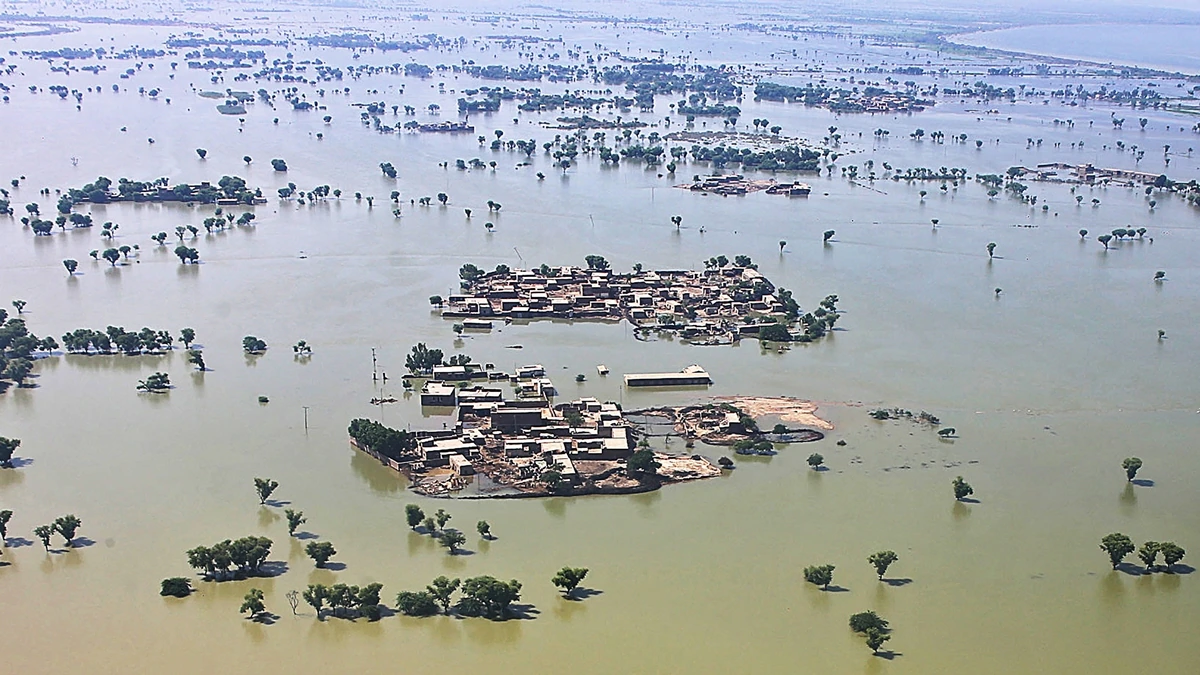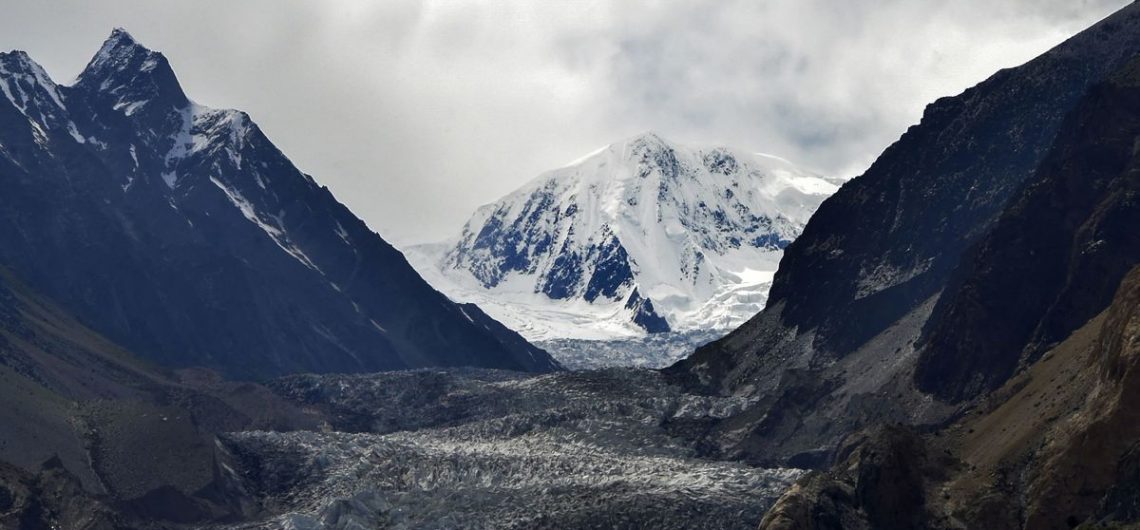Floods in Pakistan, droughts in China, and changes on Mount Everest are all consequences of melting snow and ice in the famous mountain range.
Teams of Indian scientists traverse the Himalayan highlands every year when the weather warms up to examine the Chhota Shigri glacier in the country’s northern province of Himachal Pradesh. The amount of snow cover has been measured for the previous 15 years, together with soil and air temperatures, surface ice forms, and the seasonal snowmelt discharge that feeds the river valleys below.
A glaciologist at the Indian Institute of Technology in Indore, Mohd Farooq Azam, claimed, “We had put it in June and by August we couldn’t even detect the vestiges.

“Temperatures in March and April topped 100-year records, and we had an extreme heat wave in the early summer. And as a result, the glaciers melted. Last week, while our crew was on a glacier, we witnessed record-breaking melting in the Himalayas. The world’s unprecedented heat waves this summer are melting snow and ice, not just in Europe’s Alps but also in the famed Himalayan range, which is home to the world’s largest frozen freshwater reserve outside of the North and South poles. A fragile system that has helped manage the earth’s climate and important water cycles for millennia is becoming unstable as a result of global warming, which is hastening the melting of Himalayan glaciers far more quickly than scientists had previously predicted.
In Pakistan, where floods have swamped towns and agriculture, impacting more than 30 million people and killing up to 1,000 people since June, the effect is particularly severe.
There, the intense monsoon rains brought on by the rising Arabian Sea and the weather-changing impacts of La Nina have combined with glacier melt to create what Pakistani officials have dubbed a “climate disaster.” But that flood is just the beginning.
Huge droughts frequently follow extreme floods. 90% of Pakistan’s food is produced in the Indus River basin, which is twice the size of France and originates in Tibet and runs through Pakistan before emptying into the Arabian Sea close to Karachi.
Water shortage is ironically brought on by the fact that when the basin floods, a large portion of the water rushes to the ocean rather than permeating the soil. According to a World Bank research, South Asia’s population of 1.5 to 1.7 billion people may be in risk of water shortages by 2050.
Lengthy after the flood waters in Pakistan have subsided, the effects are expected to ripple across the global economy, adding to the long list of harvests this year that have been damaged by extreme weather, from Brazil to France. However, the disruption of a significant cryosphere is also a factor in the alteration of global weather patterns, which warm the oceans, increase sea levels, and exacerbate droughts, even in China.
Over 1.3 billion people depend on the river systems fed by the nearly 55,000 glaciers found in the Himalaya, Karakoram, and Hindu Kush mountain ranges. In Pakistan alone, where melting ice and snow have created hundreds of high-altitude lakes prone to overflowing, more than 7,000 of those are found. The interdependence of the ocean and the functioning water cycle are well understood by science. What makes these two systems crucial? Because they control the environment of the planet, according to Anjal Prakash, a professor and research director at the Indian School of Business in Hyderabad. “The mechanism that controls the climate of the world must be safeguarded.”
The rapid glacier melt in the “roof of the world,” Pakistan’s floods, and India’s record-breaking heatwave might change the tone of climate discussions at COP27, which is taking place in November in Egypt. There, the Nile is suffering due to global warming, which is also making life more difficult for farmers in its more saline delta.
Developing nations, which contributed just a small portion of historical greenhouse gas emissions, will lobby for increased funding from developed nations, which have benefited for more than a century at the price of the environment. The funds are intended to aid in adaptation as well as compensate less developed countries for the negative consequences.
Pakistan serves as a clear illustration. According to Mohsin Hafeez, Pakistan’s representative at the International Water Management Institute, it is ranked as the ninth most climate change vulnerable nation in the world, yet it only contributes 1% to global greenhouse gas emissions.
“Pakistan will need to be more cautious and take more actions to strengthen its ability to deal with climate change,” Added Hafeez. However, Pakistan is unable to handle matters on its own.
Since the dawn of civilization, floods and droughts have had an impact on human societies, but as the world heats, their frequency and severity are rising.
More water evaporates and gets trapped in the atmosphere as the planet warms, causing drought and, when it does rain, a deluge.
It implies that severe floods in Pakistan, which currently experiences yearly monsoon rains, would happen more frequently. According to the US National Centers for Environmental Information, the period from January to July 2022 was the sixth-warmest start to a calendar year for the whole world in data going back 143 years.
To assist Pakistan cope with the crisis, proposals have already been made for debt forgiveness from lenders. The nation was dealing with financial and political unrest even before the flood. This week, it obtained a loan of $1.2 billion from the International Monetary Fund to prevent an impending default.
However, according to Finance Minister Miftah Ismail, the flood damage is estimated to be worth upwards of $10 billion, which is almost 3% of the nation’s GDP from the previous year.
According to Planning Minister Ahsan Iqbal, swirling floods have hurt the economy and millions of acres of agriculture, including approximately 40% of the coveted cotton harvest in the worst-hit province of Sindh.
There has also been persistent underinvestment in flood defenses and the deteriorating dams and canals constructed to irrigate drier areas in less developed countries like Pakistan, where massive populations and widespread poverty strain government resources. The Tarbela and Mangla reservoirs, which are located on each side of Islamabad, are less able to hold floodwaters and avoid inundation farther downstream as a result of the lack of investment. They have gotten so clogged with silt that has been flowing down from the mountains.
Pakistan may get money to assist with housing individuals who have been uprooted, but given its financial difficulties, there probably won’t be much left over to spend in that infrastructure.
Fahad Saeed, a climate scientist with Climate Analytics based in Islamabad, believes that Pakistan, along with India and other developing nations, should present a case at COP27 for loss and damages resulting from these extreme weather events. Pakistan is the Chair of the Group of 77, a group of 134 developing nations.
Saeed stated, “The floods this year are a wake-up call for everyone. This is the impact of the 1.1 degree Celsius temperature increase. Climate events that are too severe for low- and middle-income countries are the outcome.
Even the highest summits are feeling the effects of climate change. The Himalayas may lose 64% of its ice by 2100, according to the International Centre for Integrated Mountain Development in Nepal, changing the visage of mountains that have motivated human ambition.
Located in the Hindu Kush Himalaya, which runs from northern Myanmar to Afghanistan, are renowned peaks like Mount Everest and K2, which have drawn generations of explorers and climbers. That too is evolving.
Officials in Nepal said this summer that they planned to transfer the base camp for Mount Everest expeditions off the rapidly thinning Khumbu glacier as crevasses increasingly appeared in the region where climbers sleep as snow and ice are smashing through mountain communities and flattening hotels.
The Indian glaciologist Azam remarked, “This year’s heat waves and the significant flooding in Pakistan are a warning.” This is the turning moment where humans must just go back.
![]()


Comments